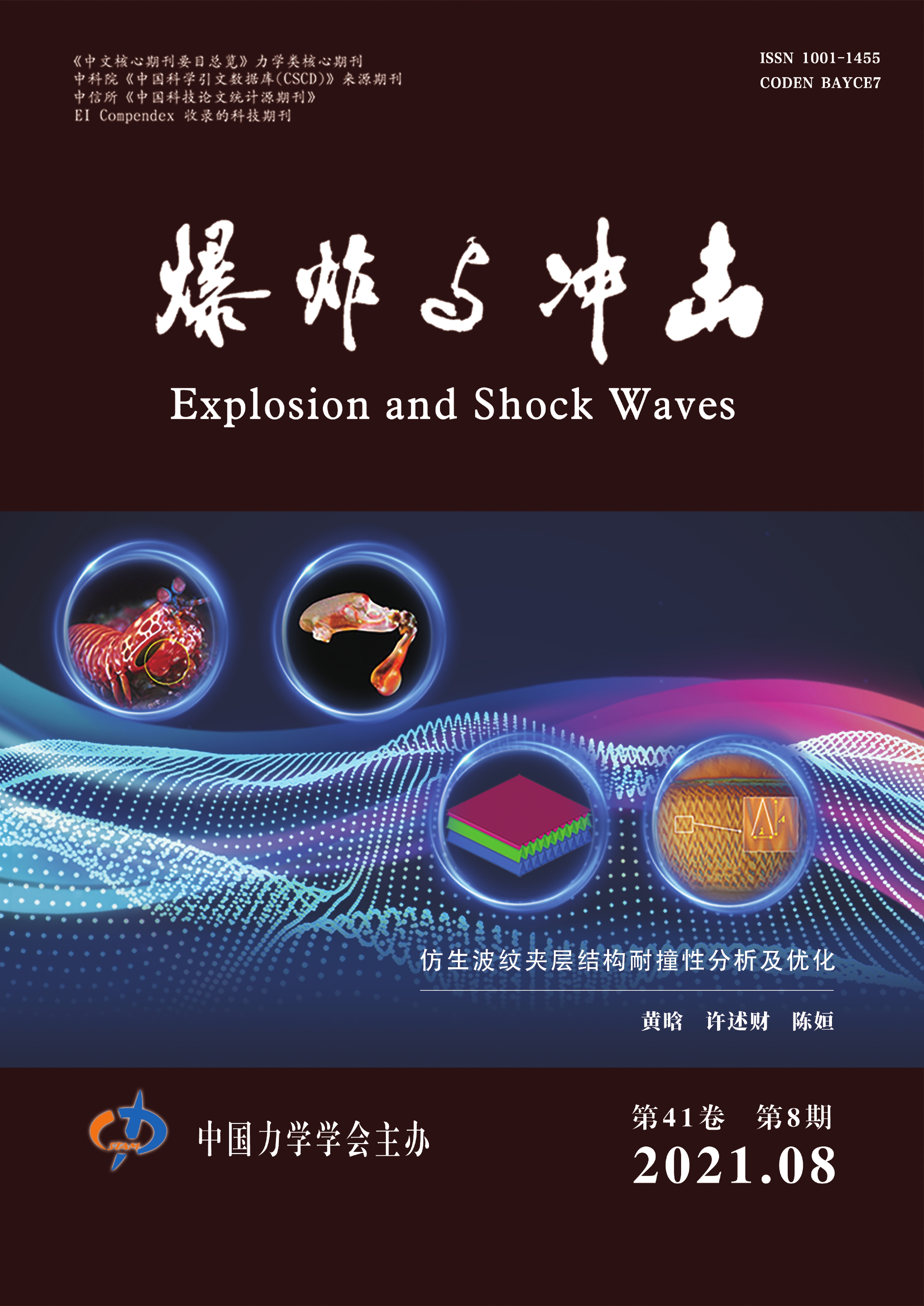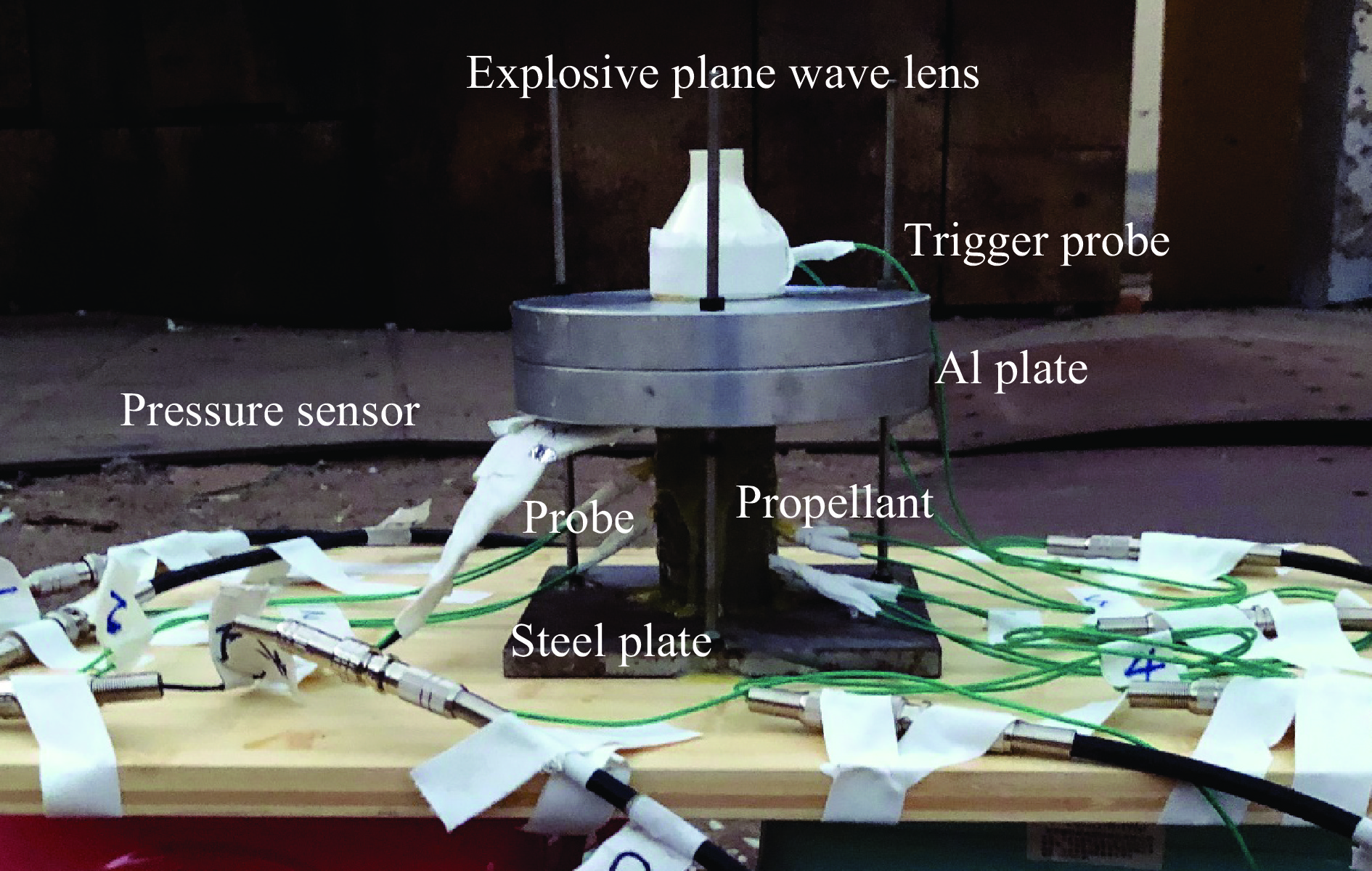| [1] |
WANG X F, WANG Q H, WANG N F. Suggestion on studying hazard classification of high energy solid propellants [J]. Chinese Journal of Explosives and Propellants, 2003, 26(1): 59–61. DOI: 10.3969/j.issn.1007-7812.2003.01.018. |
| [2] |
LIAO L Q, XU H X, LI Y H, et al. Experimental study on hazard of HTPB propellants [J]. Chinese Journal of Explosives and Propellants, 2010, 33(4): 28–31, 43. DOI: 10.3969/j.issn.1007-7812.2010.04.007. |
| [3] |
CHANG X L, LONG B, HU K, et al. Experimental study on low temperature crack growth behavior of HTPB propellant [J]. Journal of Solid Rocket Technology, 2015, 38(1): 86–89, 106. DOI: 10.7673/j.issn.1006-2793.2015.01.016. |
| [4] |
TARVER C M, FRIED L E, RUGGIERO A J, et al. Energy transfer in solid explosives: UCRL-JC-111343 [R]. Washington: USDOE, 1993.
|
| [5] |
VORTHMAN J E. Facilities for the study of shock induced decomposition of high explosives [J]. AIP Conference Proceedings, 1982, 78(1): 680–684. DOI: 10.1063/1.33249. |
| [6] |
URTIEW P A, ERICKSON L M, ALDIS D F, et al. Shock initiation of LX-17 as a function of its initial temperature [C]// Proceedings of the Ninth Symposium (International) on Detonation. Portland: OCNR, 1989.
|
| [7] |
AVERIN A N, ALEKSEEV A V, BATALOV S V, et al. Investigation into low-temperatures influence on high explosive compounds sensitivity to shock-wave impacts [J]. AIP Conference Proceedings, 1996, 370(1): 847–850. DOI: 10.1063/1.50838. |
| [8] |
CHI J C, LIU Y S, GONG Y Q, et al. Investigation of shock pressure evolution of initiation in IHE’s JB9014 at ambient and −54 ℃ [J]. Chinese Journal of High Pressure Physics, 2001, 15(1): 39–47. DOI: 10.11858/gywlxb.2001.01.006. |
| [9] |
WU J Y, CHEN L, LU J Y, et al. Research on shock initiation of the high energy solid propellants [J]. Acta Armamentarii, 2008, 29(11): 1315–1319. DOI: 10.3321/j.issn:1000-1093.2008.11.007. |
| [10] |
GUSTAVSEN R L, GEHR R J, BUCHOLTZ S M, et al. Shock initiation of the tri-amino-tri-nitro-benzene based explosive PBX 9502 cooled to −55 ℃ [J]. Journal of Applied Physics, 2012, 112(7): 074909. DOI: 10.1063/1.4757599. |
| [11] |
CHEN L, PI Z D, LIU D Y, et al. Shock initiation of the CL-20-based explosive C-1 measured with embedded electromagnetic particle velocity gauges [J]. Propellants, Explosives, Pyrotechnics, 2016, 41(6): 1060–1069. DOI: 10.1002/prep.201600048. |
| [12] |
刘丹阳, 陈朗, 杨坤, 等. CL-20基炸药爆轰产物JWL状态方程实验标定方法研究 [J]. 兵工学报, 2016, 37(S1): 141–145.
LIU D Y, CHEN L, YANG K, et al. Calibration method of parameters in JWL equation of state for detonation products of CL-20-based explosives [J]. Acta Armamentarii, 2016, 37(S1): 141–145.
|
| [13] |
PI Z D, CHEN L, WU J Y. Temperature-dependent shock initiation of CL-20-based high explosives [J]. Central European Journal of Energetic Materials, 2017, 14(2): 361–374. DOI: 10.22211/cejem/68392. |
| [14] |
PEI H B, ZHONG B, LI X H, et al. Study on the cylinder tests and equation of state in RDX based aluminized explosives [J]. Chinese Journal of Explosives and Propellants, 2019, 42(4): 403–409. DOI: 10.14077/j.issn.1007-7812.2019.04.015. |
| [15] |
|
| [16] |
孙业斌, 惠君明, 曹欣茂. 军用混合炸药[M]. 北京: 兵器工业出版社, 1995.
|
| [17] |
章冠人, 陈大年. 凝聚炸药起爆动力学[M]. 北京: 国防工业出版社, 1991.
|










 DownLoad:
DownLoad:








